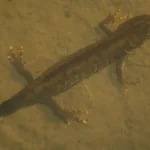Update 26th Jan. 2021: This blog post is specifically about great crested newt surveys in Scotland, it does not apply in England where there are several systems in place to bypass the need to undertake GCN surveys for projects.
The least common species of newt in Great Britain, great crested newts (GCN; Triturus cristatus) are often wrongly regarded as the enemy of development. Statements from politicians about GCN causing unnecessary delays and costing the economy money are harmful to conservation in the UK. So where do such claims come from and what does it mean for you?

A male great crested newt seen under powerful torchlight. Torching is one of the best methods for identifying the presence of great crested newts in a pond.
Great Crested Newt Protection
Great crested newts are the only widespread amphibian in Scotland which is offered full protection as a European Protected Species. This means GCN and their habitats are offered full protection by the Conservation (Natural Habitats, &c.) Regulations 1994 as amended. As a result, in areas where GCN are common, great crested newt are a material consideration for planning authorities. Therefore, when deciding whether to grant permission for a project, the planner will want to know whether it will affect great crested newts. This assessment needs data, and for great crested newts this can only be fully completed during the spring months.
What Does This Mean For You?
Often highlighted upon submission of a planning application or receipt of a Preliminary Ecological Appraisal, GCN surveys may be required for your project. One of the greatest annoyances for applicants is finding out that their project may be subject to delays. I appreciate that this can be very frustrating and I think it reflects on all of us. As ecologists, planning authorities, and developers, we need to do better to highlight the importance of ecology in planning.
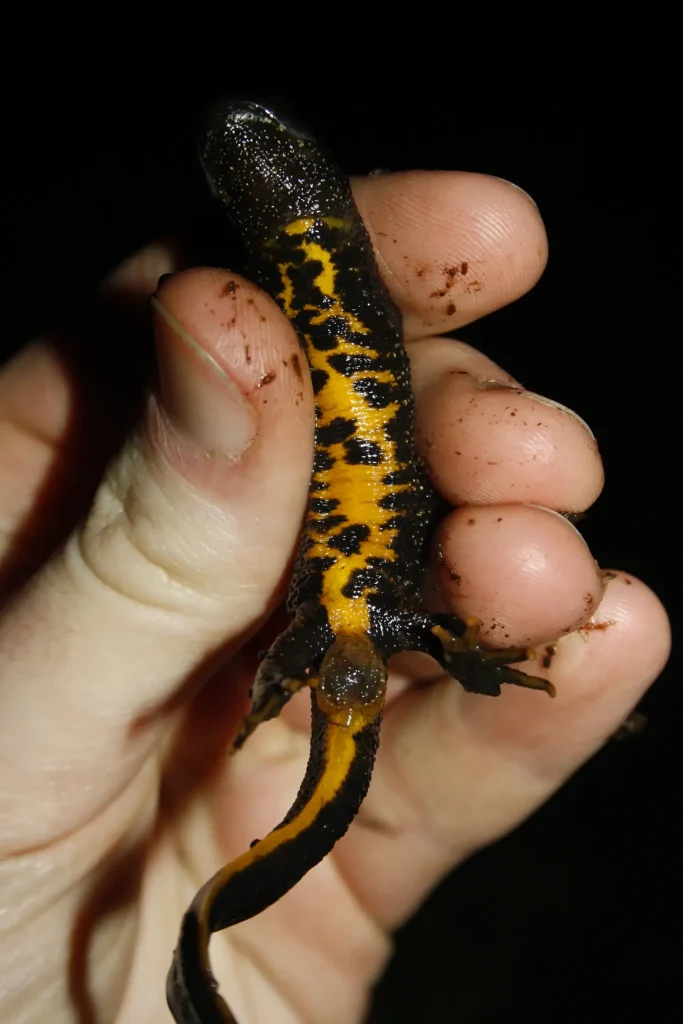
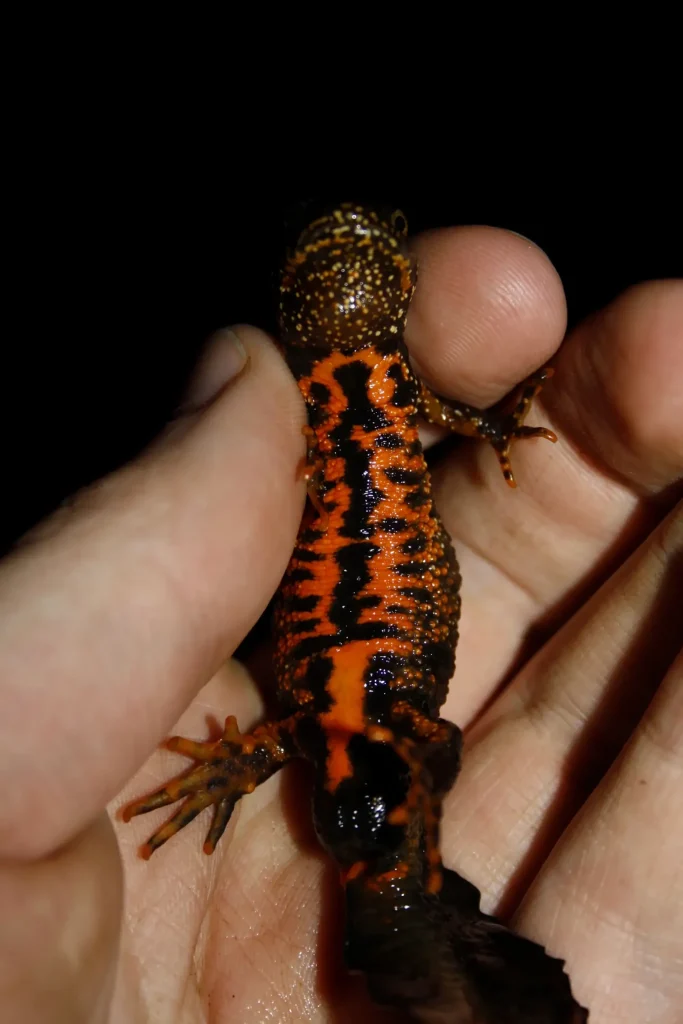
Left: A female great crested newt showing the vibrant underside colour which extends on to the tail. Right: a male great crested newt showing the variation in belly pattern and colour which can be found.
Great Crested Newt Surveys
So, once the need for great crested newt surveys has been highlighted to you, what then? You’ll need to get in touch with a great crested newt licence holder. The licensed great crested newt surveyor should be able to advise you of what to do next for your specific site.
Typically, a great crested newt survey kicks off with a desk and field-based exercise to find records of GCN and locate ponds. GCN, like all amphibians in the UK, require ponds in which to breed and lay eggs. Once these have been identified, they’ll be treated to a Habitat Suitability Index (HSI) assessment. This is a field-based assessment of ten different factors about a pond and its surrounding habitat. The HSI is used to determine the quality of the habitat for newts.
If a pond has an HSI score which suggests its suitable for newts, further surveys are usually required. There’s two different types of GCN survey that are usually completed, each has their own pitfalls and benefits.

Newts wrap their eggs in the leaves of aquatic vegetation. Great crested newt eggs are bright white or yellow which makes them easily distinguished from the eggs of smooth or palmate newts (Lissotriton vulgaris or L. helveticus) which are grey or brown.
Traditional Great Crested Newt Survey
Now, “traditional” GCN surveys are fairly laborious in nature, but are normally the best place to start. Firstly, traditional surveys are completed between mid-March and mid-June when GCN are usually present in ponds. They involve visiting a pond at sunset to deploy non-lethal traps and check for eggs. We then visit when it’s dark to use high-powered spot lamps to “torch” the pond and find newts. In fact, EP Ecology has published research which looked at the best time to find newts by this method. In the morning, we return to collect traps and use nets to try and catch GCN too.
To identify the presence of GCN in this way, you need to complete four separate visits. This usually consists of one each in late March, early April, late April, and early May. If no GCN are located, this would be the end of the survey. However, if GCN are found during the first four visits then a further two will be required. These consist of one visit in late May and one in early June which is used to determine the “population size class estimate” of GCN.
Population size class estimates are very important in planning – if GCN are present, the planner will need to know the population size. They use this measure to determine what effects your proposals will have. For example, if you’ll lose a breeding pond with a “large” GCN population, this may have a more significant impact than if you lose one with a small population. Consequently, a population size class estimate survey of six visits using traditional methods will most likely be required.
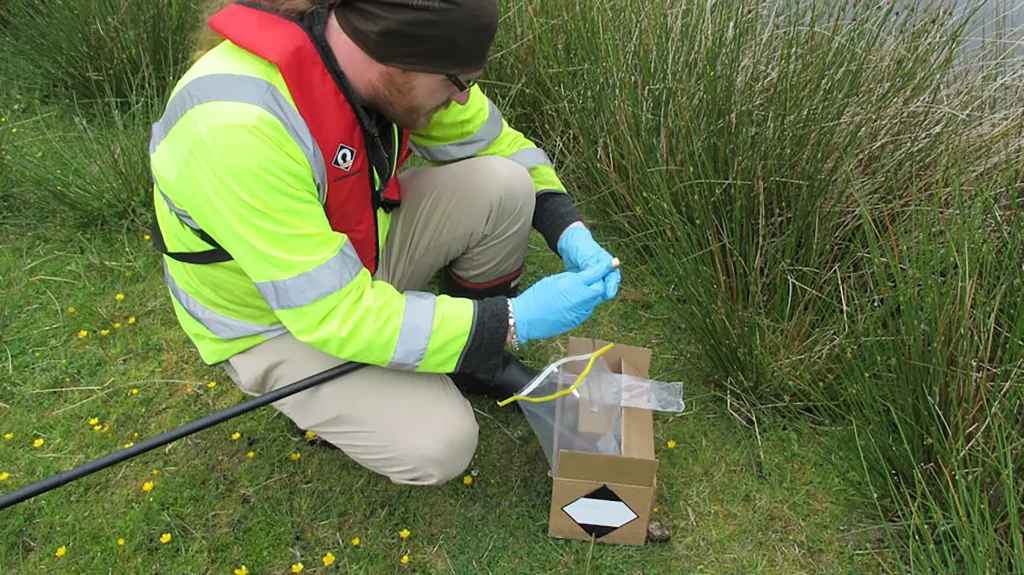
eDNA surveys can be completed during the day. A series of water samples are collected and stored in alcohol for sending to a specialist laboratory for analysis.
Environmental DNA (eDNA) GCN Surveys
eDNA surveys for great crested newt are a little newer to the market than the traditional survey methods. They involve two visits to a pond to collect water samples and send these off for analysis. Great crested newts “shed” cells in to the water, and these can be used to complete quantitative PCR (qPCR). This can tell you whether great crested newts are or have been present within a pond. What this does not do, is tell you how many newts are there. Consequently, you still need to complete traditional surveys if you get a positive result to estimate the population size class.
This is where the problem with eDNA comes in, the eDNA sampling window commences in mid-April. Therefore, if you get your positive result in late April, you’ve missed half of the GCN traditional survey season. As a result, your project may end up being delayed by a year before you can determine population size.
However, where eDNA has its use is that you can collect eDNA samples in to the end of June. So, if you’ve already missed the main survey season, eDNA can be useful. By using eDNA, you can determine whether you have newts present within your site. This helps with planning for surveys the following year.
Finally, eDNA has recently been queried in its efficacy. The original publication promoting eDNA for GCN stated 99.7% efficacy for detecting the presence of great crested newt. However, recent work has highlighted several potential causes for false negatives and even false positive results. Furthermore, eDNA has not yet been proven to be conclusively effective in Scotland.

Two great crested newts in a non-lethal aquatic trap.
A Combined Approach
There can be cost savings associated with a combined approach. Doing your first two traditional survey visits then completing an eDNA survey would give you a robust set of presence/absence data. This can reduce the risk of delays from a positive eDNA result. This is because you can simply continue with the traditional methods already started. We’d be happy to discuss with you the best approach for GCN surveys to suit your project needs.
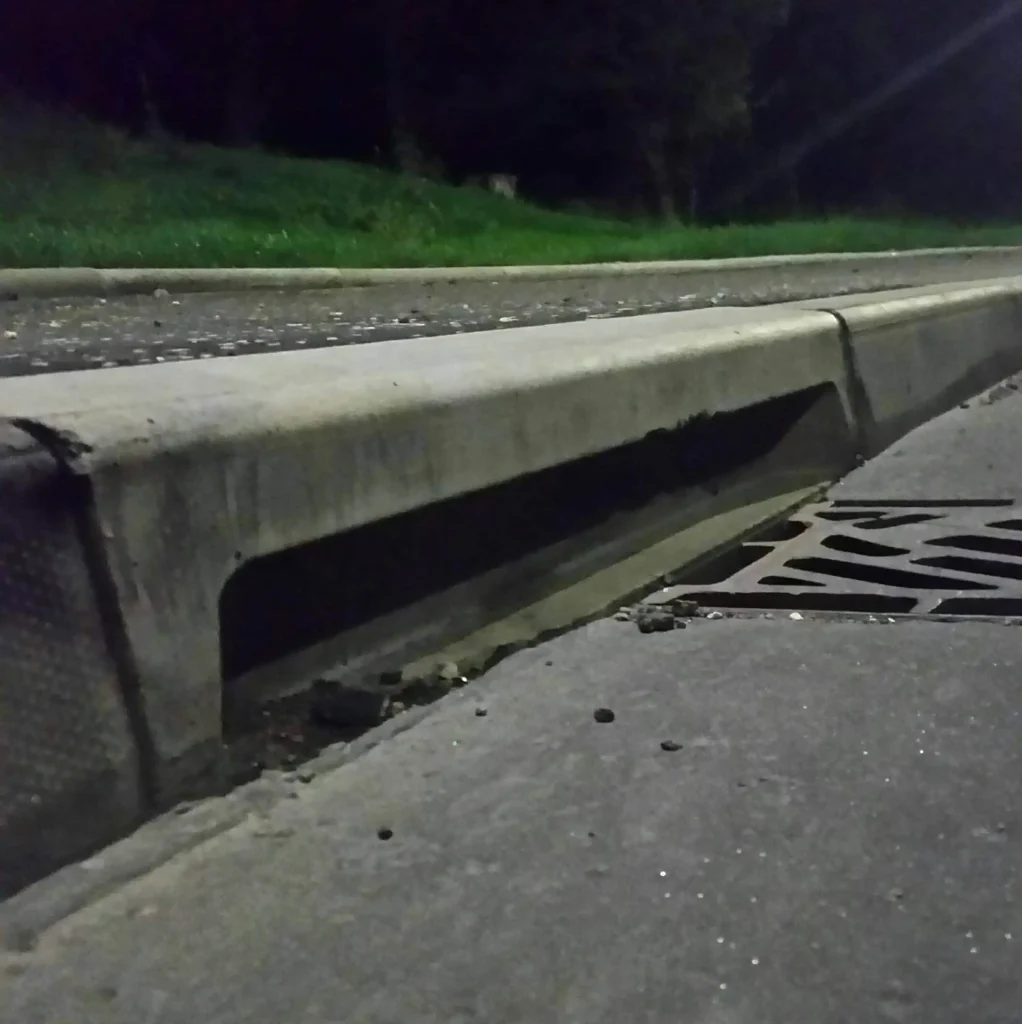
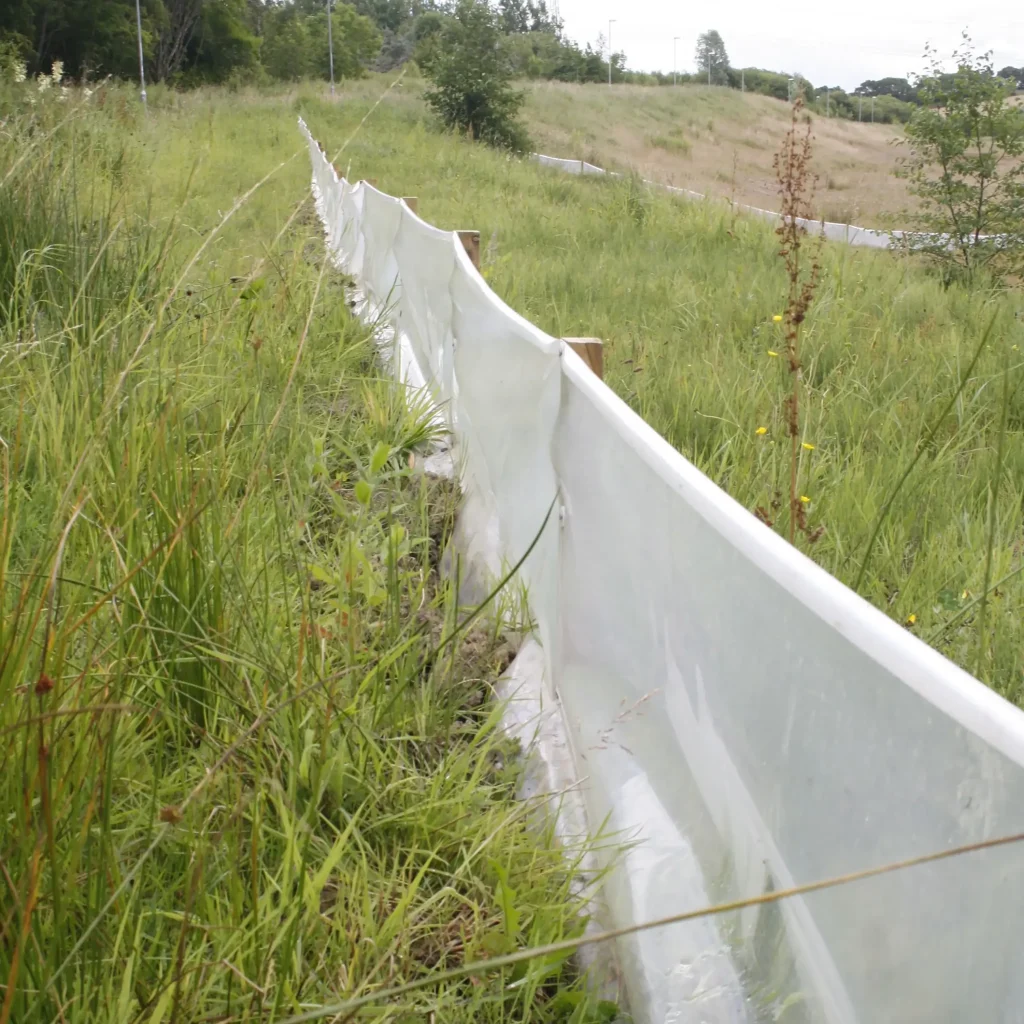
Left: mitigation for great crested newts and other amphibians can include these recessed kerbs at gully pots to minimise amphibians falling in and becoming trapped. Right: temporary exclusion fencing can be used under licence to prevent GCN from entering a development site.
What Next?
Well once you know whether you have GCN present on your site, and you have identified the effects of your proposals, you’ll often need to enact mitigation or compensation for this species. This could be anything from trapping and translocating to modifying the design of SuDS to be more newt-friendly. Maybe I’ll write a blog on that some day. All of this mitigation and compensation is put in place in an effort to ensure that your project has no effect or a positive effect on great crested newt populations.
Get in Touch
Here at EP Ecology we’re very keen to try and get a net gain for biodiversity wherever possible, and would be more than happy to discuss your Great crested newt survey and mitigation needs. Why not get in touch and we can have a no-obligations discussion about how we can help you today.
